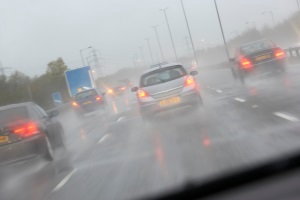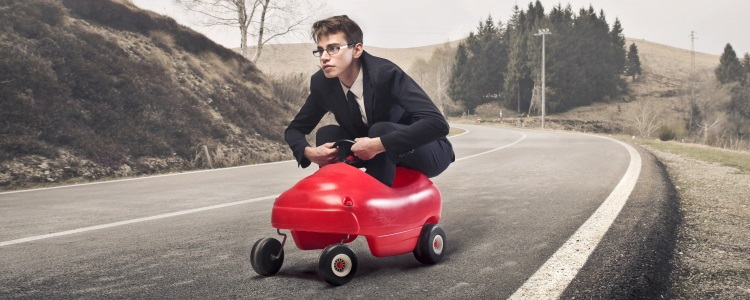Rainy season starts at the end of June and lasts well into September – which means summer storms are in full swing across much of the US. With intense thunderstorms, rain, and even hail, drivers need to be on hyper alert. One of the biggest causes of accidents on the road during this time of the year is hydroplaning. It’s not something drivers want to experience, so what do you do if your vehicle ends up hydroplaning?
What is Hydroplaning?
 Hydroplaning is when a vehicle slides or skids uncontrollably on a wet surface. When a car hydroplanes, it means the tires encounter more water than they’re able to handle. The water pressure in the front of the tire pushes water underneath it, creating a thin layer of water between the tire and the road. When too much water builds up, the tires end up floating above the road surface and lose traction.
Hydroplaning is when a vehicle slides or skids uncontrollably on a wet surface. When a car hydroplanes, it means the tires encounter more water than they’re able to handle. The water pressure in the front of the tire pushes water underneath it, creating a thin layer of water between the tire and the road. When too much water builds up, the tires end up floating above the road surface and lose traction.
What makes hydroplaning scary is that you don’t need an abundance of water in order to lose control. In fact, the first 10 minutes of rainfall can be worse than driving through a large puddle. The reason why? Because the oil residue on the road mixes with the rain and immediately creates a slippery surface. More rainfall eventually washes most of the residue away, although you should still be cautious when driving on wet roads.
What to do when Hydroplaning
Hydroplaning can be unexpected and scary. The good news is that you can avoid hydroplaning by slowing down and avoiding puddles when it rains. But, sometimes, the rain has other plans, and you do end up hydroplaning even if you’re being cautious. So, in the event you do hydroplane, it’s important you follow these four steps to avoid losing full control of the vehicle:
- Don’t use the brakes – Applying the brakes while hydroplaning can cause the car to skid and lose even more control.
- Turn into the slide – You may have heard this term before, but not know what it means. Turning into the slide means steering your wheel in the direction the back of the vehicle is heading. So, if your car hydroplanes and the rear end is sliding toward the left, turn your wheel to the left to help regain control. Remember to not oversteer – overcorrecting can cause the vehicle to go further out of control and spin in a full circle, so make sure you adjust steering appropriately.
- Wait for the car to reposition itself – Keep turning into the slide until the vehicle is realigned with the road and you have full control again.
- Pull over – If you sense that any damage occurred, or just need a breather after experiencing hydroplaning, pull over so you can recover and/or assess any damage.
The most important thing to remember is to stay calm during the hydroplaning event. Panicking only makes the situation worse.
Is Your Car Ready for Bad Weather?
Not having your tires checked for tread depth or properly inflated can put you at a greater risk of hydroplaning. It’s important you're as prepared as possible before hitting the road during an intense storm – it’s better to pay for repairs and required maintenance now than experience an accident that costs you more or puts you in danger.
If you need a new car that can handle intense weather, but worry your credit is holding you back, let Auto Credit Express help out. Our service can point you toward a local special finance dealership with the lending resources available to assist people in challenging credit situations. Just fill out our no-obligation auto loan request form to start the process today.
















